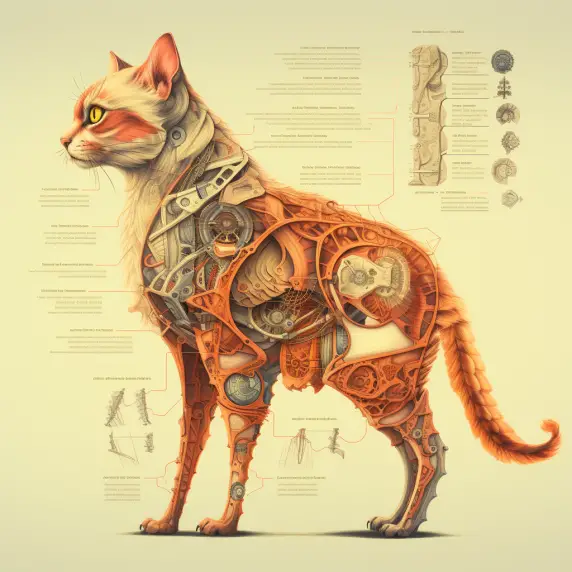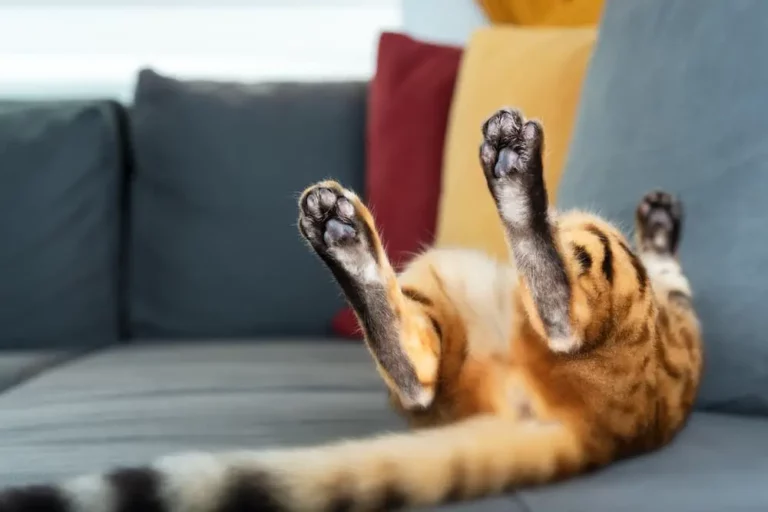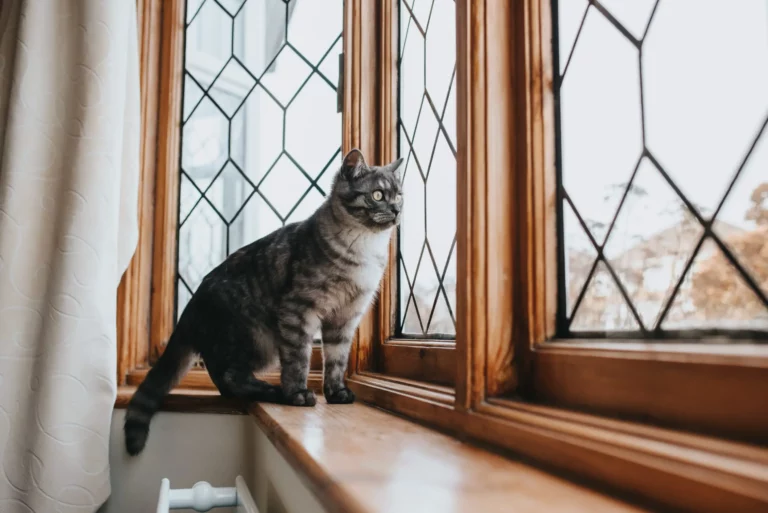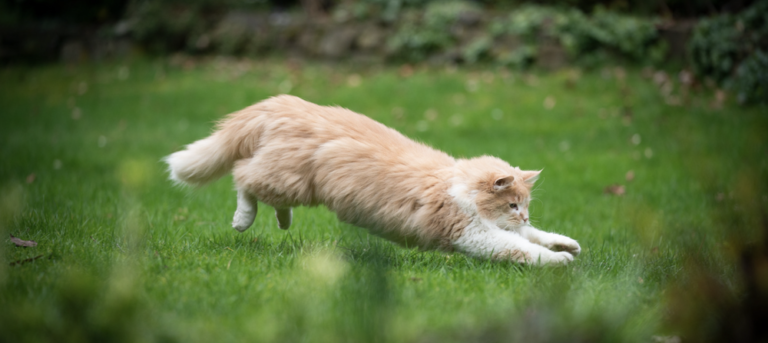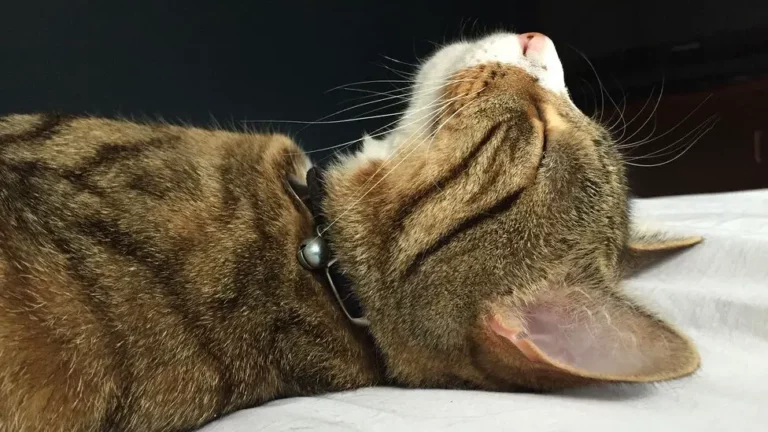The Causes and Solutions for Cat Dandruff
In this post, we delve into a common feline issue that often leaves cat owners puzzled – why does my cat have dandruff?
Yes, just like humans, our feline friends can also be affected by this skin condition. From an untrained eye, cat dandruff may seem inconsequential, but it can be a symptom of underlying issues that demand your attention.
In this post, you’ll find:
- A comprehensive explanation of cat dandruff and how to identify it
- An exploration into why your cat may have dandruff on different body parts
- Insights on age-related factors contributing to dandruff in older cats
- A review of potential causes including environmental, diet-related, and medical conditions
- Guidance on home remedies and quick interventions for managing cat dandruff
- Prevention strategies to help you proactively combat this issue
Let’s get started on our journey to better understand why your cat has dandruff and what you can do about it!
Key takeaways
Cat dandruff can occur due to environment, grooming, diet, or health conditions.
Specific areas like the cat’s back or ears are more prone to dandruff.
Older cats are more susceptible to dandruff due to changes in skin condition.
Regular grooming, a balanced diet, and a stress-free environment can prevent cat dandruff.
Persistent dandruff or additional symptoms should prompt a vet consultation.
Home treatments like specific shampoos and dietary adjustments can help, but professional treatment may be needed.
Every cat is unique, so a vet’s tailored advice is essential for proper skin and coat health.
Short answer: Cat dandruff could result from several factors, such as a dry environment, inadequate grooming, diet, age, or underlying health conditions. It’s crucial to understand the causes and find the right solutions to help your furry friend.
Understanding Cat Dandruff
Cat dandruff, just like human dandruff, is characterized by tiny, loose, white flakes of skin. However, cat dandruff is not just a cosmetic concern. It can sometimes indicate underlying health issues or care needs that aren’t being met.
The Science Behind Cat Dandruff
On a basic level, dandruff occurs when the process of skin cell renewal is faster than normal. The dead skin cells, instead of falling off one by one, cluster together and form visible flakes. Now, it’s natural for cats to shed skin cells, but when this process becomes too fast, it results in dandruff.
Identifying Cat Dandruff
Cat dandruff usually appears as small, white flakes on your cat’s coat. It’s most noticeable against darker fur, but regardless of your cat’s coat color, you can often feel dandruff when you stroke your cat. The texture may feel grainy, and the dandruff flakes may be more concentrated in certain areas like the back or near the tail.
Differences Between Cat Dandruff and Other Skin Conditions
While dandruff is commonly mistaken for dry skin, they are not the same. Dandruff often appears as oily or waxy flakes, while dry skin tends to result in small, dry skin flakes. Similarly, dandruff is not a sign of fleas, but the two can co-exist. If your cat has dandruff but no fleas, it may be due to other underlying issues.
Understanding cat dandruff is the first step in dealing with the issue. Once we are familiar with its characteristics, we can better identify the root causes and find effective solutions.
Why Does My Cat Have Dandruff on His Back?
You might have noticed that your cat has more dandruff on its back. This isn’t unusual and there are reasons for this.
Exploring the Specifics of Back Dandruff in Cats
Cats, particularly overweight or older cats, may struggle to groom their backs properly. This area then becomes prone to the accumulation of dead skin cells that leads to dandruff.
Addressing Dandruff on Cats’ Lower Back
Just as with the back, the lower back is another common area for dandruff to appear. It’s one of the least accessible places for your cat to groom. This grooming difficulty leads to a buildup of dead skin cells, resulting in what’s commonly known as ‘stud tail’. Regular grooming by the cat owner can help mitigate this problem.
Understanding Dandruff on Cats’ Back Near Tail
A cat’s tail base is an area that’s not easy to reach during self-grooming. Additionally, the tail base is an area where several sebaceous glands are located. These glands can overproduce oil, leading to oily skin that traps dead skin cells and forms dandruff.
So, if you notice your cat has dandruff on its back, don’t panic! It’s quite common and is usually related to difficulties with self-grooming. However, if it persists despite your efforts, it’s best to consult with a vet to rule out any underlying health issues.
The Curious Case of Cat Ear Dandruff
Dandruff isn’t confined to the back or tail area of cats. It can appear anywhere, including the ears. Here’s what you need to know about cat ear dandruff.
Identification and Causes
Ear dandruff in cats appears as white flaky skin around or inside the ear. It may be caused by a variety of factors, including dry skin, allergies, or fungal infections. In some cases, it could be a sign of ear mites.
Differences Between Ear Dandruff and Other Ear Conditions
Ear dandruff is different from other common cat ear problems. For instance, ear mites also cause flakiness but are typically accompanied by dark, coffee-ground-like debris in the ear. Moreover, ear mites make cats scratch their ears excessively, which isn’t always the case with dandruff.
Ear dandruff might seem like a minor issue, but it’s essential not to ignore it. Regular cleaning of your cat’s ears can help manage the issue. However, if you observe that dandruff persists or is accompanied by other symptoms like redness or foul odor, it’s advisable to consult a veterinarian.
Always remember, when in doubt, to reach out to a professional.
The Root Causes of Feline Dandruff
Cat dandruff can be triggered by various factors. While some are easy to manage, others may need professional intervention. Let’s dive into the potential causes.
1. Environmental Factors and Dandruff
Your cat’s environment plays a significant role in its skin health. A dry environment, for instance, can cause your cat’s skin to lose moisture, resulting in dandruff. Similarly, stress from changes in the environment can also lead to skin problems in cats.
2. Diet-Related Causes
Diet is another crucial factor in your cat’s skin health. If your cat’s diet lacks essential fatty acids, it may lead to dry skin, resulting in dandruff.
3. Medical Conditions Leading to Dandruff
Certain medical conditions, like diabetes, thyroid issues, or skin allergies, can also cause dandruff in cats. Parasitic infections, such as fleas or mites, can exacerbate skin flaking.
4. Examining the Role of Parasites in Cat Dandruff
Parasites, such as cheyletiella mites, are another cause of dandruff in cats. Often referred to as ‘walking dandruff,’ this condition occurs when these mites infest your cat’s skin, leading to scales and flakes that appear to move.
5. Why Your Cat Has Dandruff but No Fleas
It’s important to note that dandruff isn’t always a sign of a flea infestation. If your cat has dandruff but no fleas, it could be due to other factors like dry skin, dietary deficiencies, or underlying medical conditions.
Identifying the cause of dandruff in your cat is key to managing it effectively. It’s always best to consult with a vet if you’re unsure or if the condition doesn’t improve despite your efforts.
Why Does My Old Cat Have Dandruff?
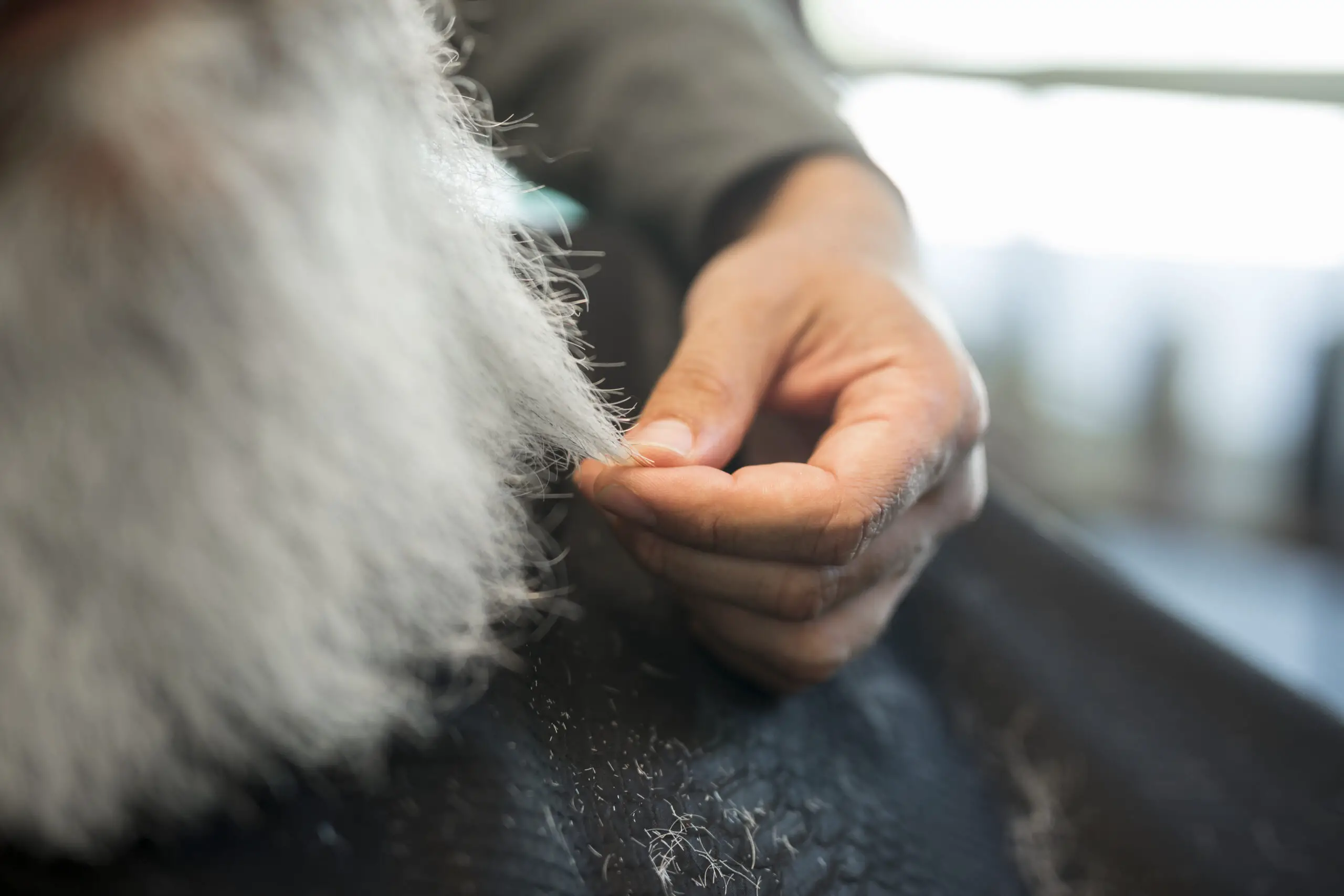
As our feline friends age, their skin health can change, often leading to conditions like dandruff.
Age-Related Factors Contributing to Dandruff
As cats grow older, their skin becomes less elastic and can’t hold as much moisture as before. This dryness can result in dandruff. Senior cats might also face challenges in self-grooming due to arthritis or other age-related conditions.
This lack of grooming can cause a buildup of dead skin cells, resulting in more visible dandruff.
Tailoring Care for Senior Cats with Dandruff
Caring for an older cat with dandruff involves addressing age-specific needs. Regular grooming can help manage the dandruff by removing dead skin cells and improving circulation to the skin. Supplementing your cat’s diet with omega fatty acids can also help by promoting skin health.
Older cats are precious, and with the right care, you can help ensure they stay comfortable and dandruff-free in their golden years. Remember to consult with your vet for advice tailored to your cat’s specific needs.
Investigating Your Cat’s Dandruff
Given the many potential causes of cat dandruff, it’s vital to investigate the problem to identify the root cause and develop an effective treatment plan.
When is Cat Dandruff Serious?
While occasional flakes may not be a cause for alarm, persistent dandruff may indicate an underlying issue. Cat dandruff becomes serious when it’s accompanied by other symptoms, such as hair loss, changes in appetite, excessive grooming or scratching, or changes in behavior. In such cases, it’s essential to seek veterinary advice promptly.
Consultation and Diagnosis
A veterinarian can help determine the cause of your cat’s dandruff. They may carry out skin scrapings, blood tests, or dietary evaluations to diagnose the issue. Understanding the cause is crucial to formulate the right treatment plan.
Remember, while it’s helpful to gather as much information as possible, self-diagnosing your cat’s condition isn’t recommended. Always consult with a vet to get a professional perspective on the matter.
Solutions for Cat Dandruff
Once you’ve identified the cause of your cat’s dandruff, you can start exploring solutions. Here’s a guide on how to manage and treat cat dandruff.
Treating Cat Dandruff at Home
If your cat’s dandruff is a result of environmental factors or grooming issues, there are several steps you can take at home. Regular grooming with a fine-toothed comb can help remove dead skin cells. Additionally, maintaining a consistent, stress-free environment can aid in managing skin health.
Dietary Adjustments for Cat Dandruff
Diet can play a key role in your cat’s skin health. If dietary deficiencies are causing the dandruff, you might need to modify your cat’s diet. Supplements rich in Omega-3 and Omega-6 fatty acids can help improve your cat’s skin and coat health.
Cat Dandruff Shampoo
Specific shampoos are designed to manage dandruff in cats. These shampoos can moisturize the skin and reduce flakiness. However, it’s important to choose a product that’s formulated for cats.
How to Get Rid of Cat Dandruff Fast
While it’s important to be patient as you tackle cat dandruff, some strategies can offer quick relief. Regular grooming, using a moisturizing cat dandruff shampoo, and ensuring your cat stays hydrated can all help speed up the recovery process.
Remember, persistent dandruff might indicate a deeper issue. If dandruff persists despite home care, it’s crucial to consult a vet. They can prescribe medications or treatments to manage any underlying conditions.
How to Get Rid of Cat Dandruff
While some causes of cat dandruff may require professional treatment, there are plenty of steps you can take at home to address this issue. Here’s a comprehensive approach to help your feline friend.
Creating a Cat-Friendly Environment
A healthy environment is vital to combat cat dandruff. Maintaining a suitable humidity level can help prevent skin dryness. Also, ensure your cat has a peaceful and stress-free space to relax.
Regular Grooming
Regular grooming can help manage dandruff by removing dead skin cells and improving skin circulation. If your cat has dandruff on hard-to-reach places like the lower back or tail, you can assist by grooming these areas regularly.
Proper Nutrition
Providing a balanced diet with essential fatty acids can help promote skin health. Consult your vet to design a diet plan or choose a specific cat food formulated to support skin health.
Regular Check-ups
Regular vet check-ups can help detect potential issues early. If your cat is prone to dandruff, routine veterinary visits can help manage the condition effectively.
Remember, while it’s essential to take steps at home, don’t hesitate to consult with a vet if your cat’s dandruff persists or if your cat seems uncomfortable. Professional advice is invaluable in maintaining your pet’s health.
Prevention Strategies for Feline Dandruff
While it’s crucial to know how to treat cat dandruff, prevention is always better than cure. Here are strategies to keep your cat’s skin healthy and prevent dandruff from forming in the first place.
Regular Grooming
Keeping your cat well-groomed is one of the best prevention strategies. Regular brushing not only helps remove dead skin cells and loose hair but also stimulates natural oil production, keeping the skin moisturized and healthy.
Balanced Diet
Ensuring your cat has a balanced diet rich in omega-3 and omega-6 fatty acids can help maintain healthy skin and reduce the chances of dandruff. Always consult with your vet to provide your cat with a diet that fits its specific needs.
Stress Management
Stress can exacerbate skin conditions in cats. Try to maintain a stable environment and routine for your cat. If there are unavoidable changes, ensure you manage them in a way that causes minimal stress to your cat.
Regular Veterinary Checkups
Regular vet checkups allow for early detection and treatment of potential issues. If your cat has had dandruff before, regular checkups can ensure the problem doesn’t recur.
By following these prevention strategies, you can significantly decrease the chances of your cat developing dandruff, ensuring a healthy, shiny coat for your feline friend.
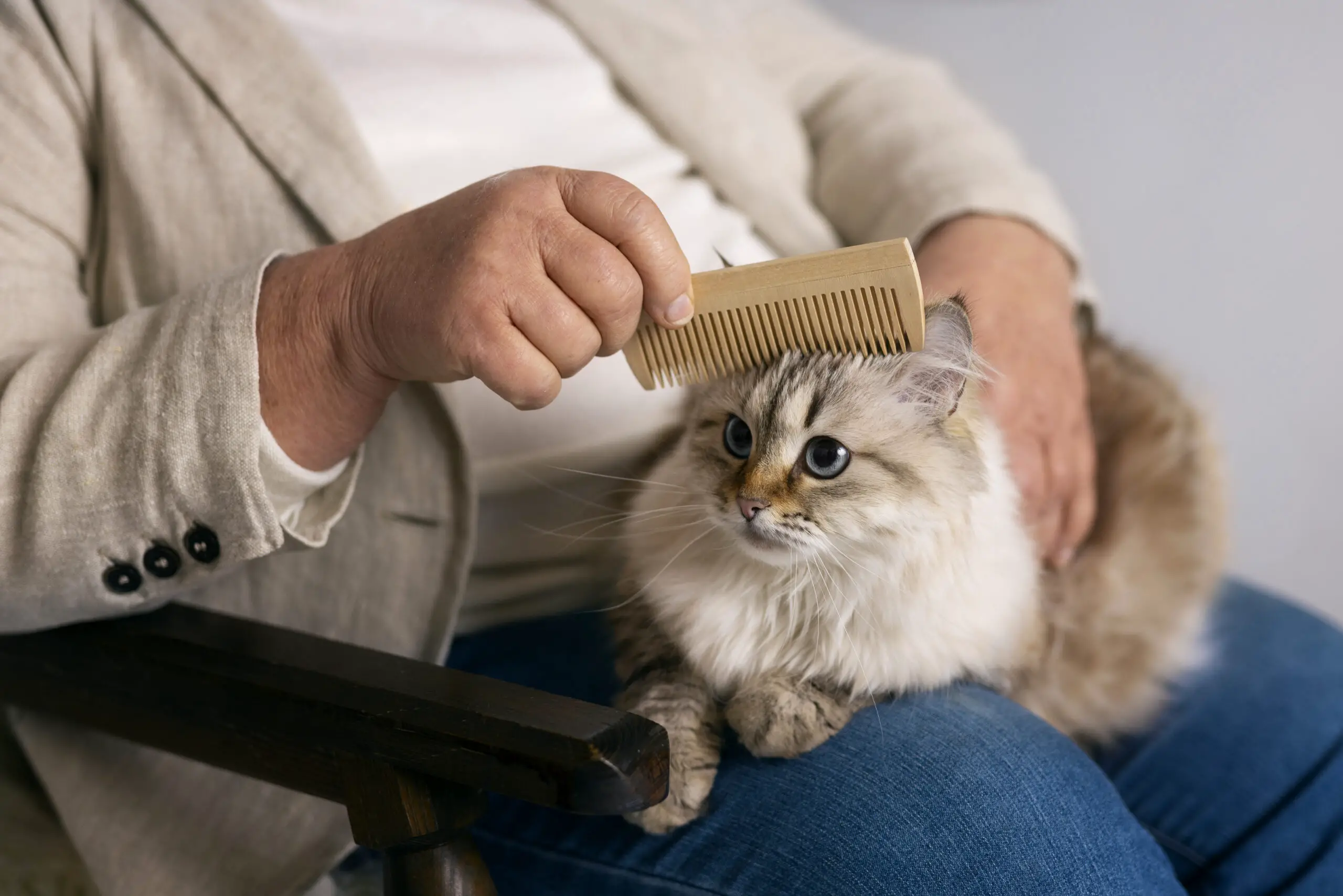
Frequently Asked Questions (FAQs)
Here are some commonly asked questions about cat dandruff.
Is cat dandruff a sign of any serious health issues?
While cat dandruff can sometimes be a sign of underlying health issues, it’s often due to environmental factors or grooming issues. However, if you notice your cat has persistent dandruff along with other symptoms like changes in appetite, excessive scratching, or behavioral changes, it’s important to consult a vet.
Can I use human dandruff shampoo on my cat?
No, it’s not safe to use human dandruff shampoo on your cat. Cats have a different pH balance than humans, and human products can disrupt this balance and irritate your cat’s skin. Always use products specifically designed for cats.
Can cat dandruff be prevented?
Yes, regular grooming, a balanced diet, and maintaining a stress-free environment can significantly reduce the chances of your cat developing dandruff. Regular vet checkups can also help in the early detection and treatment of potential issues.
Does cat dandruff always mean my cat has fleas?
No, dandruff isn’t always a sign of a flea infestation. If your cat has dandruff but no fleas, it could be due to dry skin, dietary deficiencies, or underlying medical conditions.
How quickly can I expect my cat’s dandruff to improve?
The recovery time can vary based on the cause and the treatment applied. Simple grooming and dietary changes might show improvement within a week or two. However, if the dandruff is due to an underlying medical condition, it may take longer to resolve.
Final Thoughts
Understanding why your cat has dandruff can be a challenging task due to the variety of potential causes. While environmental factors and grooming issues are common culprits, underlying health issues or dietary deficiencies can also result in dandruff.
Regular grooming, maintaining a balanced diet, and ensuring a stress-free environment are key to keeping your feline friend’s skin healthy. Specific issues like dandruff on the back or ears can often be addressed with a bit of extra care in these areas.
However, it’s crucial to remember that persistent dandruff, especially when accompanied by other symptoms, should always be evaluated by a vet. Early detection and professional intervention can ensure the best possible health outcome for your cat.
Cat dandruff might be a common issue, but it doesn’t have to be a chronic problem. With a good understanding of the causes, prevention strategies, and treatment options, you can help your cat maintain a healthy, dandruff-free coat. Remember, every cat is unique, and what works for one might not work for another. Always consult with your vet to ensure you’re taking the best possible care of your cat’s skin and coat health.
References and Further Readings
- Don’t Brush Off Feline Dandruff – Texas A&M University Veterinary Medicine & Biomedical Sciences
- Cat Dandruff: Is It Something to Worry About? – Purina
- Dandruff in Cats: Causes and Treatment – WebMD
- Cat Dandruff: What You Should Know – North Kenny Veterinary Hospital
Remember, these resources are a great place to start, but they can’t replace the advice of a vet. Always consult with your vet for issues related to your pet’s health.

